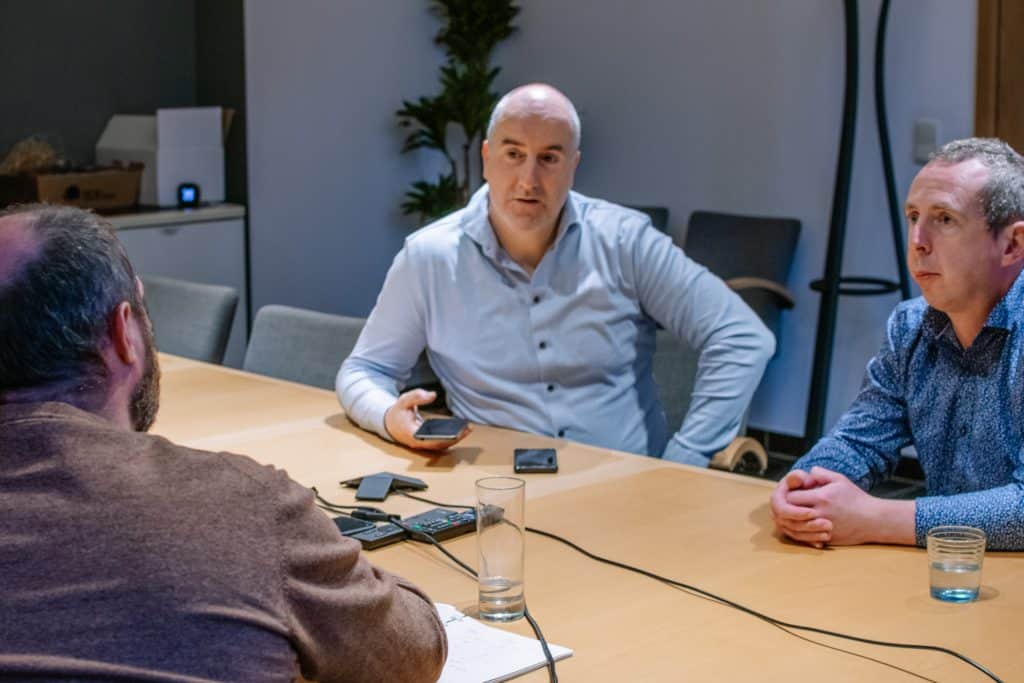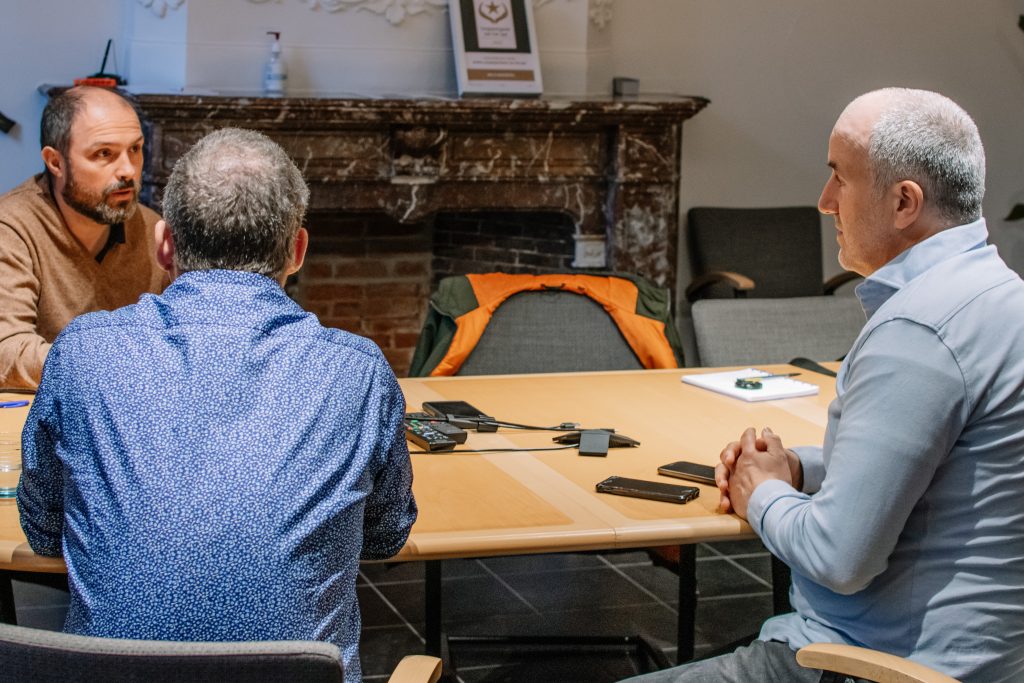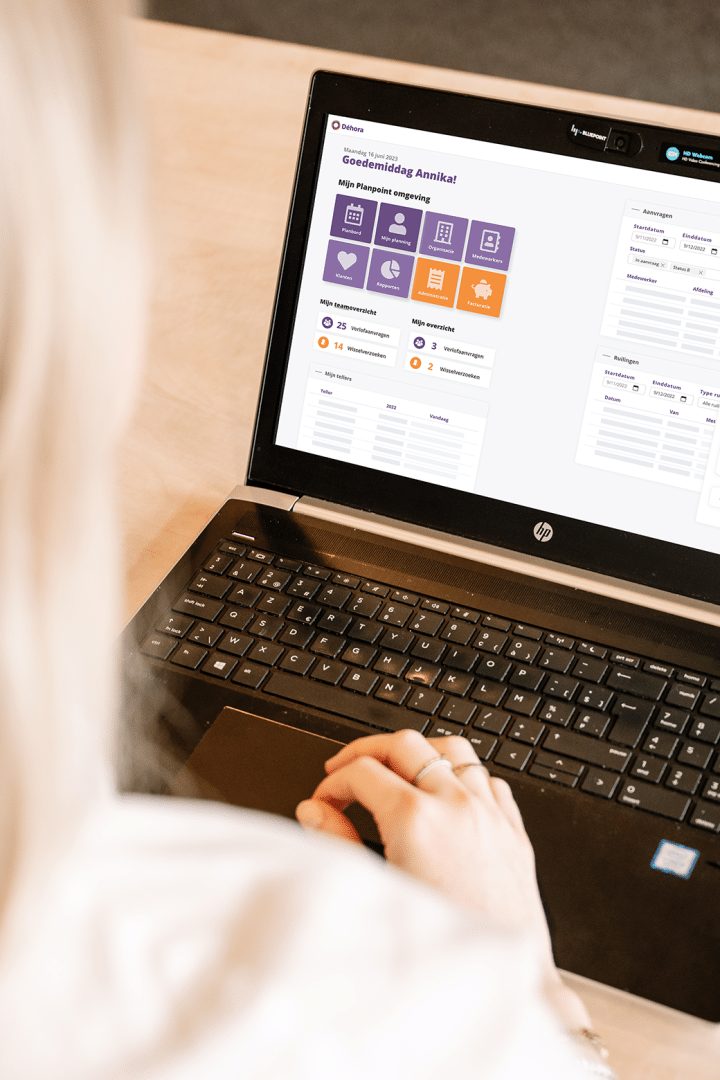
Welfare Association West Brabant
Read how a successful collaboration between Welfare association West-Brabant and Déhora led to the ideal software for the scheduling of services at home.
Scheduling software for regional family care
Cross-pollination of expertise and experience is an important key to success. This is demonstrated by the successful cooperation between Déhora and Welfare association West-Brabant. The result? An efficient and advanced planning solution for both family care and supplementary home services.
We spoke with Davy Rottiers, Administrative Officer Regional Family Care Service, and Tom Troch, Family Care Coordinator about their planning challenges, co-creation and their choice of Planpoint.
Regional family care and home care
Welfare association West-Brabant is a collaboration of 26 PCSWs (Public Center for Social Welfare) in the Halle-Vilvoorde region, around Brussels. The basic idea behind the cooperation: together offering an answer to changing welfare needs and the demand for specialized help.
The members of Welfare association West-Brabant can call on various regional services: debt mediation, legal aid, archive management, information security, project work and family care and supplementary home care.
The regional family care service is by far the largest service. For complementary home care, there is a collaboration with 2 PCSWs, accounting for 6 employees. As for family care, more than 100 employees are on the road every day on behalf of 16 PCSWs to provide quality care at home. On an annual basis, as many as 110,000 hours of care are provided to 741 families. Today, the family care service of the association is already the third largest public family care service in Flanders.

The challenge: from manual to digital
Over the past few years, the number of hours worked and the number of employees in family care rose sharply. However, the way of planning and organizing remained the same. Until recently, the operation and back office was still strongly Excel and paper oriented.
“With us, the regional manager makes the planning for his or her own region. Everyone had his or her own Excel, and these were printed out. We as administrative staff then entered the planning and performance into the system. So we had to check and process a mountain of paperwork. Pretty time-intensive and error-prone” says Davy.
Not to mention that schedules and working hours were constantly changing. Due to illness, vacation or because colleagues swap with each other. A schedule is alive. With every change, the regional manager has to call around to inform everyone of the new work schedule. Davy adds: “Plus, every performance has to be properly tracked in function of billing and subsidization, among other things. Just start sorting it out in all those loose files. We felt that this could and should be done differently.”
In short, due to the size of the organization and requirements in terms of quality and efficiency, Welfare association West-Brabant was forced to drastically innovate. A thorough and comprehensive digitization of personnel planning was initiated. And that started with the search for a modern WFM software.
The objectives?
- Digitalization and simplification of the planning process.
- More efficient scheduling of employees and clients.
- Automatic and immediate communication about changes.
- Less administrative hassle thanks to links with Vesta and BelRai.
- Sustainable cooperation with a software partner with knowledge of planning.
Various providers and applications were compared. In the end Welfare association West-Brabant chose to work with Déhora, a partner not so much at home in the workings of local governments, but more specialized in everything to do with planning and scheduling.
Innovation through co-creation
“In our search for a planning software, we put a lot of things side by side. Including, of course, cost price, quality, usability and technology. What was at least as important to us was the knowledge behind the software and the degree of flexibility to be able to customize things. That was clearly more difficult with other parties, or it was going to cost a lot of money,” says Tom.
“The discussions also showed that technical knowledge is certainly not the same as content knowledge. You (Déhora) are completely different in that regard. There is so much experience in the organization, you speak the same language as the people who do the planning. Moreover, you have a very customer-oriented approach to the further development of Planpoint.”

Welzijnskoepel West-Brabant and Déhora together chose to go one step further. In an innovative business model of co-creation and knowledge sharing, it was decided to develop a brand new WFM solution for family care and home help based on the Planpoint platform. Tailor-made for Welfare association West-Brabant, but usable for the entire sector.
Luk Berlanger, R&D manager of Déhora on co-creation: “For us, innovation starts with the involvement of customers in the design process. This brings more creativity and expertise to the table than you will come up with on your own. So we always make it a point to involve customers in the further development of our WFM software in an accessible way. That’s perfectly possible because of our flexible technology. The cooperation with Welzijnskoepel West-Brabant was a great opportunity for this. A software for and by family and home care. But of course it doesn’t always have to be so extensive. Input on small, day-to-day functionalities is also very valuable. That’s how we prefer to work.”
Tom adds: “We started together with an idea to make a roster software. In the meantime it has become so much more. And it has also taken some time, more than we initially expected. In the beginning, for example, we didn’t even plan to integrate files into Planpoint. But now look! That’s just in there. Planpoint really brings together all the administrative, support and planning processes of family care. Work schedules, administration, performance registration, billing and even route guidance. All information and communication now sits neatly in one central point. Anyone who starts with Planpoint for home or family care now benefits from masses of experience. And together we can be very proud of that, can’t we?”
“That’s right! I can imagine that an extensive process of co-creation would put off a smaller local government a bit. They don’t always have a Davy or Tom either (laughs). But lo and behold, now there is an entry-level software for family care planning, but still with room to mold.” says Luk.
“In Planpoint, all administrative, support and planning processes come together: work schedules, administration, meal distribution, performance registration, invoicing and even route guidance.”
Total solution for planning services at home
For Welfare association West-Brabant, staff rosters, client files and hours worked are now in one system. No more separate worksheets. Employees and coordinators always and everywhere have a good overview of the planning and the total number of hours worked per employee. Creating and managing the schedule now takes much less time.
“Planpoint is a complete solution that works great. It makes my work a lot easier and more efficient. And the time savings are huge. We can now process more heads than before. I can spend that time on other things, which gives my job more added value. The number of papers coming in at the beginning of the month has dropped significantly. We save trees at the same time,” Davy laughs.
Integration between client files, Vesta and Social security
An additional advantage is that Planpoint can be easily linked to various external data sources and software. Planpoint thus offers an integrated solution for client information, care planning, billing and reporting. Also for Welfare association West-Brabant
Relevant client information for family care and supplementary home care is automatically retrieved from Social Security, ensuring that personal information is always up to date. Based on this input, Planpoint then calculates the individual user contribution, which can be applied for billing purposes. Furthermore, Planpoint uses a link with Vesta for the digital exchange of services for subsidy purposes.
Involvement of caregivers
Not only for the coordinators does Planpoint represent a step forward. Because Planpoint is web-based, caregivers also have access to key functions from anywhere. Simply via their own smartphone. They can always access their personal schedule, they know when they have to work, which client they are going to visit and have immediate access to the relevant client files. Via the ESS (Employee Self Service), caregivers can also register expenses themselves, send in sick bills, enter comments or enter mileage.
Caregivers today are not only expected to provide care, they also have an important signaling function regarding the mental health of clients. This in turn is useful in follow-up for family caregivers, doctors or relatives. In Planpoint, caregivers can keep comments and records about changes or signals they notice during their visits. This input can include information about the client’s health status, behavioral changes, need for additional support, and so on.
“The feedback from people is also very positive. This means for example less paperwork for them. Planpoint’s mobile application is tremendously user-friendly. It’s all logical, you can find everything in it. Basically: if you can make a post on facebook, you can quickly get started with planpoint,” said Davy.
Want to know more about Planpoint?
Are you looking for a new planning software for your organization? Or do you have a specific question? Leave your details below and we’ll get back to you.
